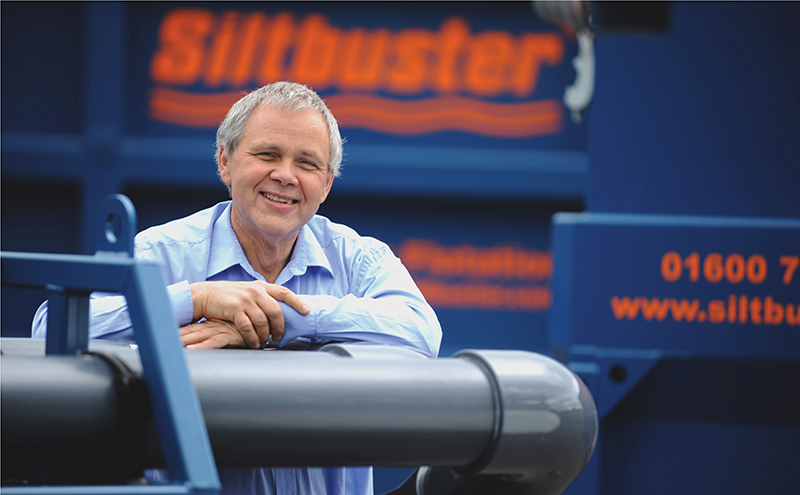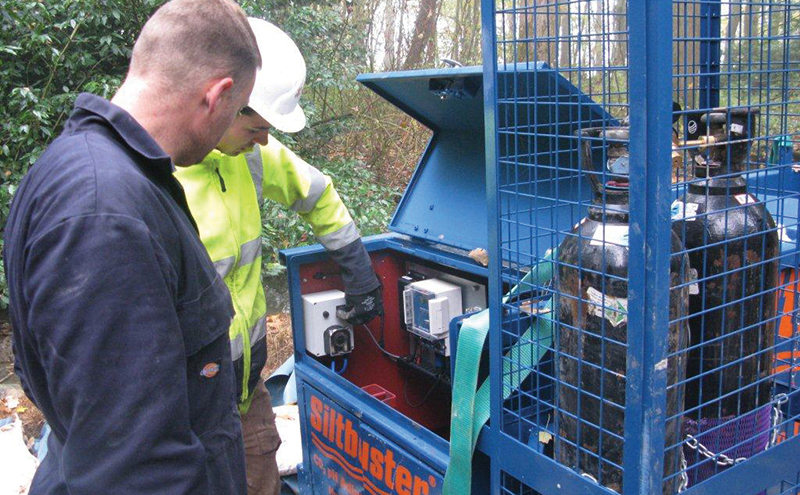Many construction firms have improved their environmental approach. Yet one area where errors are still made is concrete water. Dr Richard Coulton, managing director of Siltbuster, the water treatment experts, elaborates.

MOST construction workers are aware of the risks of silt and oil pollution, but still allow concrete wagons to wash out in leaky waste skips. Yet concrete washwater, even if it looks visibly clean, on a volume by volume basis, has the potential to cause much greater harm than silt or oil.
This is because the pH of concrete washwater is incredibly high – typically 12 to 13 on a scale which runs from 1 (acid) to 14 (highly alkaline) – making it highly damaging when discharged to the aquatic environment. Only domestic oven cleaner has a higher pH and think of the health warnings that come with that!
So what’s the best way to treat highly polluting concrete water?
In essence, concrete washwater needs to have its suspended solids removed and its pH reduced to an acceptable value. Suspended solids removal is relatively straightforward – typically involving the settlement of the solids. However, choosing the best method of pH adjustment is more involved.
DILUTION – NO SOLUTION
Getting concrete washwater to an acceptable pH level of 6-9 (the level the Environment Agency stipulates for release to the environment) through dilution is neither practical nor cost effective. That’s because pH is a log scale. Every unit reduction in pH requires a 10 fold dilution with pH neutral water. So a typical concrete washwater with a pH of 12 would require the following dilution volumes:
pH 12 1:1
pH 11 10:1
pH 10 100:1 (Typical upper limit for discharge to sewer)
pH 9 1000:1 (Typical upper limit for discharge to the environment)
pH 8 10,000:1

WHAT ABOUT ACIDS?
With dilution not viable many use mineral acids, such as sulphuric or hydrochloric, to adjust the pH. However these are dangerous to handle and must be securely stored to minimise the risk to workers or accidental release into the environment. Plus surplus unused acid must be disposed of as hazardous waste, which is costly.
Safety aside, precise pH control is difficult to achieve with mineral acids. That’s because over 90% of the acid is consumed reducing the pH from the initial value to around 11 and then only a few percent is consumed further reducing the pH to the target range. This makes it all too easy to overshoot the target resulting in acidic water – which is equally polluting! Using these acids also creates “secondary pollutants” – sulphate and chloride – which are nasty for the environment.
CITRIC ACID – NOT A SIMPLE SOLUTION
Some promote the use of citric acid (fruit acid) as an alternative, adding it either as a pre-prepared solution or as granules which slowly dissolve in the water. However similar environmental, health and safety concerns prevail. As with mineral acid, there is a risk of over dosing and acidifying the treated water, particularly when citric acid is used in the solid form, as the pH continues to decline whilst the granules dissolve. Citric acid also increases the Biochemical Oxygen Demand (BOD) of the water above the limits for safe discharge into the aquatic environment. Plus citric acid is expensive and theoretically any excess citric acid should be disposed of as hazardous waste.
CARBON DIOXIDE
Given these drawbacks the latest thinking is that carbon dioxide (which is mildly acidic when dissolved in water) is the best neutralising agent for concrete water. Carbon dioxide is self buffering, making it virtually impossible to acidify the water though overdosing. Unlike acids, the by-products of neutralising the water with carbon dioxide are non-hazardous, and can actually be considered beneficial. The gas is easy to store and partly full cylinders can simply be returned to the supplier, without incurring any additional cost associated with the disposal of hazardous waste. Lastly it is a much more cost effective treatment – costing around £0.35/m3 compared to circa £2.50/m3 for citric acid and £1.50/m3 for mineral acids.
In short, when you weigh up the technical, environmental, health and safety and cost issues, carbon dioxide is by far the best way to neutralise highly polluting concrete washwater.










